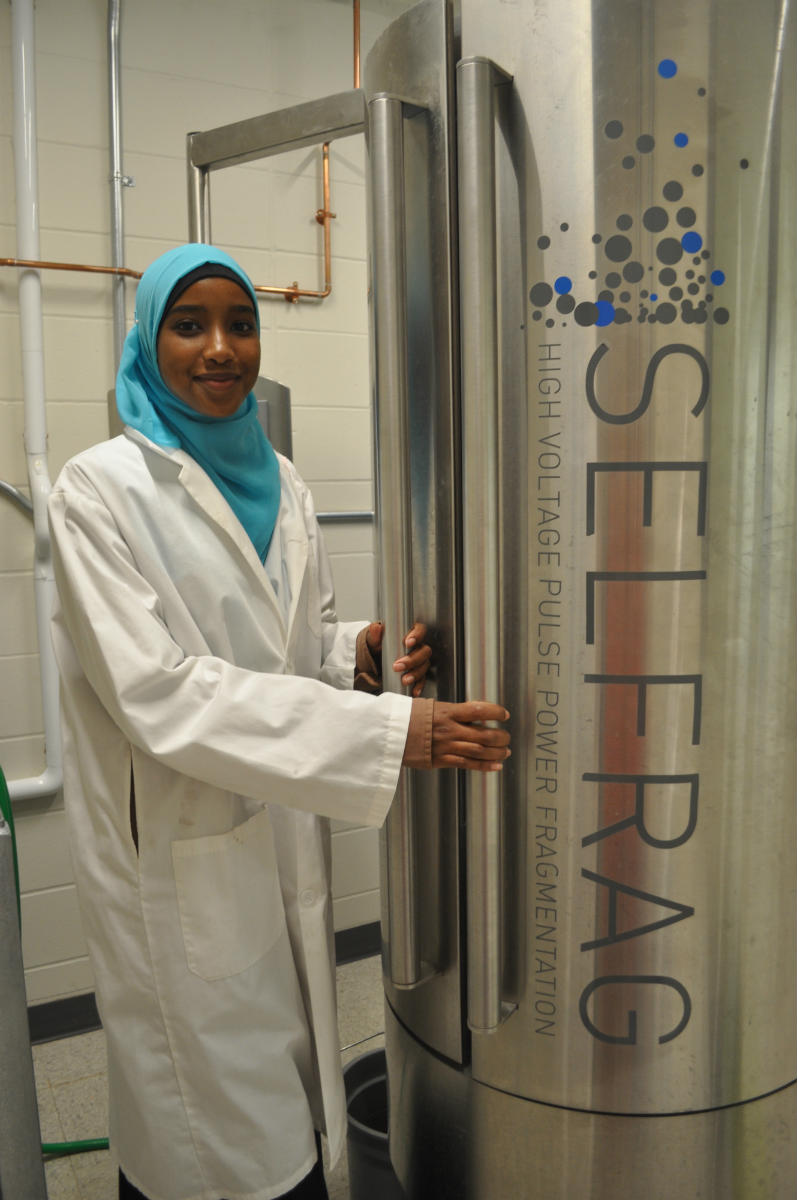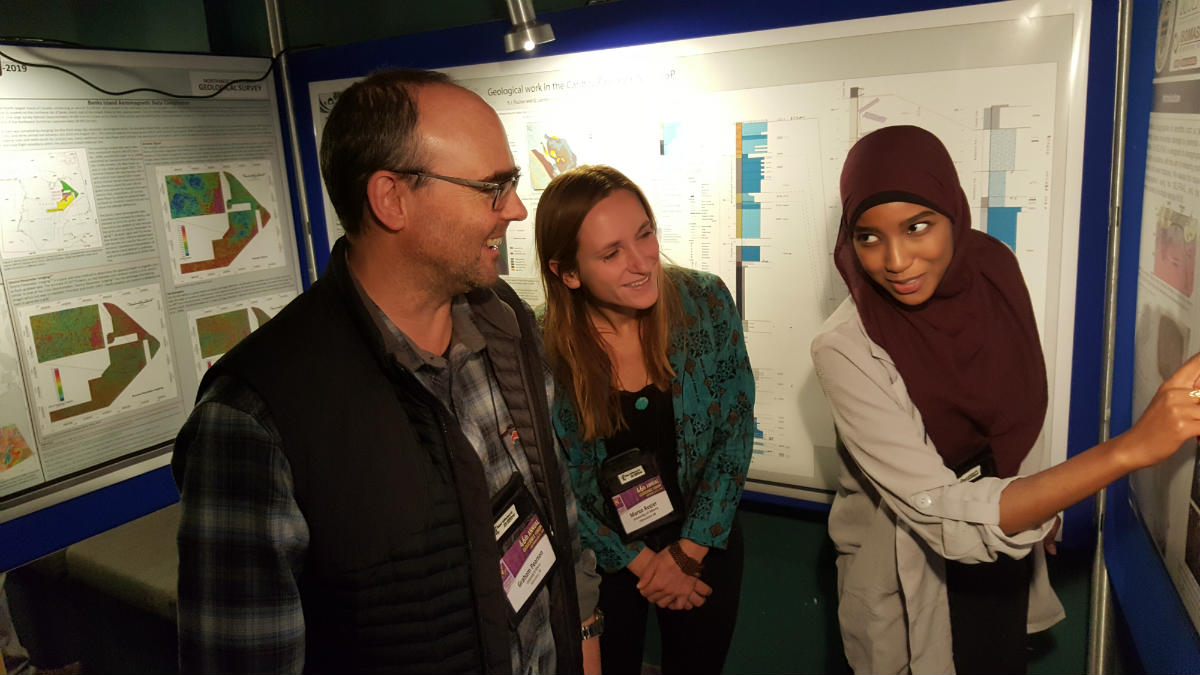
Hamdi Ali is pictured here with the Isomass SELFRAG machine she used to make the discovery, working under the supervision of University of Alberta researchers Graham Pearson and Margo Regier. Photo credit: WISEST
There aren't many grade 11 students who can say they spent their summer conducting research at the University of Alberta. There are even fewer who can say they spent their summer break discovering a new way to liberate diamonds from kimberlite, their host rock. In fact, there may just be one. And her name is Hamdi Ali.
Ali spent her summer at the University of Alberta through the Women in Scholarship, Engineering, Science, and Technology (WISEST)Summer Research Program. WISEST aims to empower women and other underrepresented groups in science, and this summer, the group brought 37 high school students to campus to conduct paid research.
"The program seemed like a great opportunity to broaden my understanding of what a career in science could look like," said Ali. "This summer has been transformative and unlike anything I've ever gotten to do before."
Ali spent the summer working under the supervision of Graham Pearson, professor in the Department of Earth and Atmospheric Sciences, Henry Marshall Tory Chair, and Canada Excellence Research Chair Laureate and graduate student Margo Regier. Ali credits their supervision for the value of her experience.
Diamonds in the rough
Diamonds are usually extracted by crushing rock samples and sifting through the resulting debris. Ali's research was to explore how a new tool, called a SELFRAG lab system, could help electrically separate the diamonds and-the team hoped-allow them to be recovered with slightly less damage than can occur in the traditional crushing method.
The results were even more dramatic and were clear even in the first test. "The first experiment that Hamdi made with the SELFRAG machine was astonishing," said Pearson, renowned the world over for his boundary pushing discoveries of super-deep diamonds and water in Earth's mantle.
Ali's task was to record the quality and number of diamonds in different samples, half of which were processed traditionally and half run through the new machine.
"When Hamdi told me that she was unable to find any diamonds in the mechanically-separated material, I was surprised and double-checked her result myself," said Regier.
Sure enough, not only was the traditionally-processed half devoid of diamonds, when Ali searched the half that had been separated using the SELFRAG machine, she found seven perfectly-formed undamaged diamonds, showing the new method had not only left the diamonds in better quality, but could be used to find them even more reliably.
"Maximizing diamond recovery is essential for producing a responsible and sustainable mine," said Regier. "We realized that this was an important result that could have large impacts for industry."
Industry taking note
As Regier correctly assessed, Ali's findings have caught the interest of the diamond industry.
"This was my first foray into research, and while my results seemed promising, I didn't know just how relatively extraordinary they were," said Ali.
Ali had the opportunity to present the findings to some De Beers Group Exploration employees while they were coincidentally visiting the campus this summer as part of the company's longstanding support for the university's various diamond research projects at the University of Alberta. Even the manufacturers of the SELFRAG machine were unaware of this potential application of the equipment.
"Hamdi put together an impressive set of slides for her presentation and effused confidence and excitement as she shared the findings," said Regier. "It was great to watch her step up to a challenge and to watch the audience respond with equal amounts of interest and positivity."
Sharing findings with northern Canada
Most recently, Ali, Pearson, and Regier travelled to the Northwest Territories to share the discovery at the Yellowknife Geoscience Forum, a three-day event focusing on the latest in geoscience in a province with an active mining and diamond industry.
"The conference went really well. Hamdi stood on stage in front of about forty people and delivered an informed presentation very confidently," said Regier. "I saw someone approach Hamdi afterwards to say that hers was the best talk of the session-despite the fact she was presenting alongside graduate students and fourth-year undergraduates."
Hamdi's summer goes to show that everyone, no matter their level of experience, can get started in science-a lesson Graham Pearson hopes students take to heart:
"Science is about the joy of discovery. Doing something nobody has ever done before and finding things that nobody has ever seen before," said Pearson."I hope that the summer research program teaches students that, even in a short period, they can do research that is new, that makes a difference, that people are interested in-and that it opens students' eyes to the diversity and gender equality that exists in modern large research groups."
Know a student interested in participating in the WISEST program? Visit the WISEST website to learn more about the Summer Research Program and other opportunities. Interested in learning more about the diversity initiatives in the Faculty of Science? Check out our Diversity in Science hub for news stories and more information.
